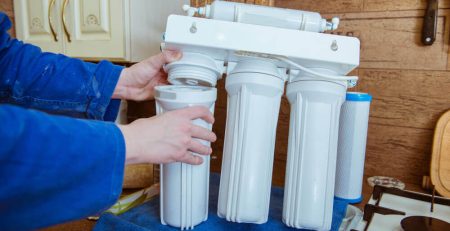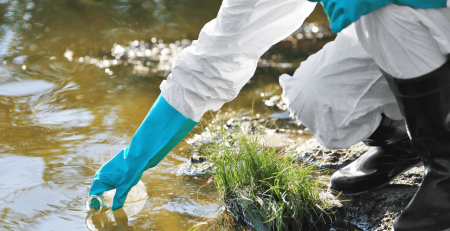Water Quality Analysis: When Is It Needed?
#WATER AND HEALTH
We often hear about water quality analysis but often we don’t understand when it is really necessary. It is in fact an area that offers various possibilities for checking the quality of the water in your home or well. Between accredited analysis laboratories and do-it-yourself kits sold in pharmacies and online, if you want to know the quality of the water you drink or use to irrigate the garden or garden, there are different solutions for all budgets.
However, we must start from an important assumption: the mains water is primarily controlled by the manager of the water service who carries out the analyzes periodically. The water quality of our aqueduct is already checked. It rightly wonders when you need to perform an analysis of the water quality? In addition, another question spontaneously arises, can you check the quality of the tap or well water yourself or should you turn to professionals?
Let’s see together if, and when it may be necessary to check the quality of the home water, the possible solutions to be adopted to obtain useful and valuable data and any costs.
Table of Contents
• Drinking water analysis and water label
• Drinking water analysis: when is it needed?
• Well water analysis
Drinking Water Analysis and Water Label
Our drinking water by definition responds to certain characteristics that certify the suitability for human consumption. Tap or bottled water is defined as drinkable when it complies with chemical, physical and microbiological suitability parameters, including some emerging parameters, established by the World Health Organization (WHO).
These parameters were implemented by the Ministry of Health of our country in Legislative Decree 31/2001, which establishes the reference chemical, physical and microbiological values of drinking water and also the standard analysis processes to be adopted.
The Water Safety Plan (PSA) or Water Safety Plan (WSP) , a pilot project based on a particular model of control and analysis of the water of the aqueduct which, in addition to ensure the safety of drinking water, it applies processes aimed at predicting any critical issues by constantly monitoring every phase of the process of drawing, drinking and dispensing water.
The water label reports the values of the main chemical, physical and microbiological parameters for the analysis of the quality of drinking water with the ranges imposed in Legislative Decree specifically:
• Macro-minerals (Sulphates, Chlorides, Nitrates, Chlorites, Calcium, Sodium, Magnesium, Potassium)
• Heavy metals (Iron, Manganese, Chrome, Arsenic, Lead, Nickel)
• Chemical solvents (chlorinated and aromatic)
• Micropollutants (herbicides, pesticides, other synthetic chemical compounds)
• Microbiological (Total coliforms, Escherichia coli, Enterococci)
The water label therefore represents the certification of the drinkability of the water supplied by the aqueduct and, if other water service operators do not provide a similar document, it is always possible to request certification of the water quality analysis. In the same way, the bottled water label certifies its quality as well as its nutritional properties.
Drinking Water Analysis: When Is It Needed?
If drinking water is by definition acceptable quality, why should it be necessary to analyze it? The water label and other similar documents guarantee the quality of drinking water in compliance with current legislation up to the point of entry of the aqueduct into any private property.
In fact, from the point of insertion of the aqueduct it is the responsibility of the private individual to check that the piping system is up to standard, that there are no infiltrations in the pipes that pass through their garden and, in general, that the quality of the water does not come in some compromised on a chemical, physical and microbiological level by the bad management of your plant. In general, it would be useful for everyone to periodically check the water quality of their tap in order to avoid potential problems, in particular for their own health.
At the same time, knowing the characteristics of home water also allows you to use any filtering systems that allow, for example, to improve the performance of household appliances. Just think of monitoring the hardness of the water that could allow you to implement anti-scale measures to optimize the maintenance of the pipes and the yield and duration of some appliances.
As for the analysis of the quality of bottled water, it may be necessary if you want to be sure of the parameters stated on the label. This may be the rare case of people with special needs, including health needs, forced to monitor the quality of drinking water because they cannot take certain substances even if in compliant quantities.
How to Check the Quality of the Tap Water At Home?
Water Quality Analysis Laboratories
Contacting professionals is always the best choice. There are in fact several accredited laboratories to analyze the waters. Of course, an accredited laboratory uses analytical tests and tests required by law and monitors all chemical, physical and microbiological parameters required by law. Generally, also the companies that manage the aqueduct carry out paid water quality analyzes. Costs vary from $120.00 upwards depending on the type of analysis.
DIY Water Analysis Kit
Different types of DIY kits are available both online and in the pharmacy, to analyze the quality of the water. These kits are generally made up of reactive papers which become colored in contact with water. The color must be compared with a reference card which gives the various shades a value of the single parameter. As an alternative to the reactive papers, there may be other control methods that still use reagents, for example inside an analysis vial, which change color or other characteristics to measure the quality of the water.
These types of tests are used to detect the concentration of nitrates, sulphates and chlorides, the hardness of the water and the pH. These kits can be useful for periodically monitoring the water quality and finding any critical issues, in order, however, to refer the individual to competent professionals.
Well Water Analysis
The analysis of the quality of the well water is absolutely necessary if it is used as drinking water but also for domestic use or for irrigating the vegetable garden. In particular, if it is used as drinking water, in addition to installing adequate treatment plants for the drinking water of the well, such as filters, chlorination plant or UV lamp, it is necessary to carry out a complete analysis. It is used in particular to evaluate the choice of the suitable treatment plant. Subsequently, it is always necessary to carry out analyzes periodically and check their quality.
In addition to pH, water hardness, fixed residue, color, turbidity, oxidability and the chemical composition (Nitrates, Nitrites, Ammonium, Chloride, Calcium, Sulphate, Iron, Lead, Chromium, Cadmium, Fluorides, Arsenic), the microbiological parameters (coliform bacteria 37 ° C, Escherichia coli, intestinal enterococci, Pseudomonas aeruginosa, pathogenic staphylococci, Clostridium perfringens, total bacterial load and more) but also indicative values of industrial or geological pollution (Vanadium, Boron, Aluminum, Selenium, Cyanide, Vinyl Chloride, Mercury and others).
If well water is used even for washing, it is still recommended to do at least a microbiological analysis. If the water in the well does not meet minimum quality requirements, it must also be avoided to use it for cooking. The same water for irrigation, both for the vegetable garden and for important agricultural crops, must be analyzed both to intercept any harmful chemical compounds or microbes and to evaluate their chemical, physical and microbiological characteristics.
An assessment that allows to verify the suitability for irrigation, as well as to optimize cultivation and ensure the best management of irrigation systems. A very important aspect when it comes to large farms. For both the analysis of well water and irrigation it is recommended to contact certified Analysis Laboratories.
In addition to analyzing the quality of the water, they can guide you in choosing suitable solutions if there are problems. The costs on average are around $150-200, it all depends on the type of analysis and the service offered. In some cases, the samples taken from the private individual are collected from the laboratory, in others a complete service is provided for the collection of the samples on site and the analysis then in the laboratory. Do-it-yourself kits are available online or in the pharmacy, useful in particular for the continuous monitoring of the water quality in order to identify any problems and then contact competent professionals.
We have seen when, why and how it is possible to analyze the quality of the tap or well water. The advice is always to choose safely and professionally based on the potential repercussions on your health.


















